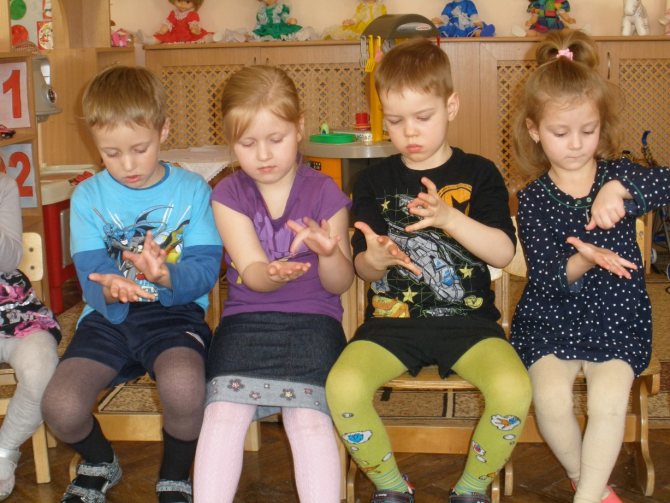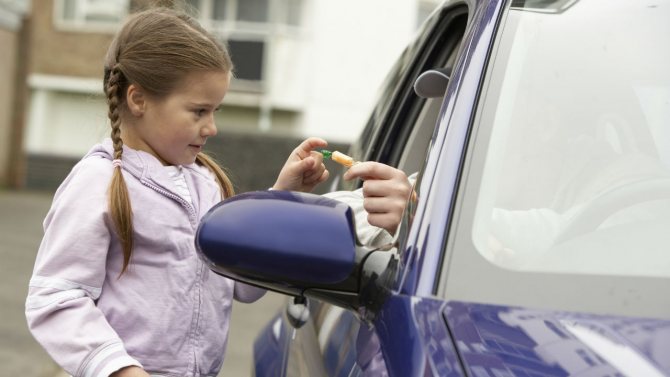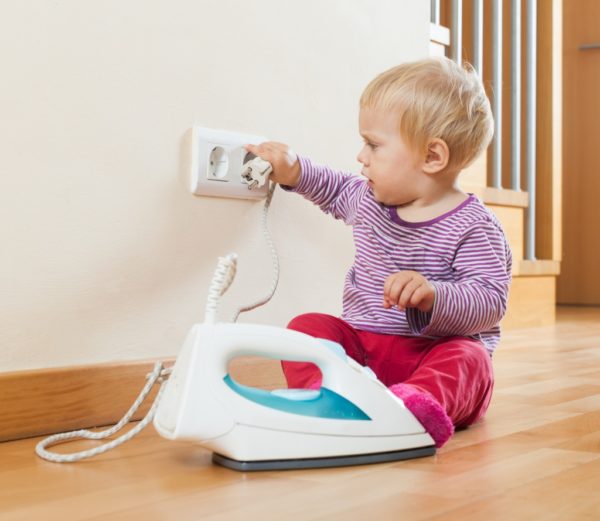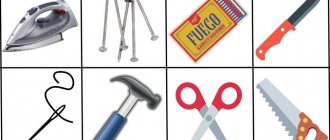Life safety games in the first junior group
The youngest preschoolers are familiar with the most frequently encountered objects. In preschool educational institutions, it is necessary to continue to develop ideas about the immediate object, social and natural environment, as well as provide basic understanding of the safe use of objects and rules of behavior. It is necessary, with the help of games, to generate interest in the problems of one’s own safety, to introduce initial knowledge about dangerous situations, solving educational problems:
- give basic knowledge about the natural world and possible threats in it (can bite an animal, there are poisonous plants);
- master ideas about various transport: cars, public, water, air, their component parts, give the concept of red and green traffic lights;
- study objects and their properties;
- teach to perceive the words “possible”, “impossible”, “dangerous”;
- provide basic knowledge about proper nutrition, lifestyle, and teach hygiene rules;
- introduce them to the group premises, how to behave in a group, in the locker room, how to behave on the street (take mom or dad by the hand).
At an early age, children have a very developed sensory perception of the world; it is important for them to study the subject tactilely. Didactic games using various objects and toys are ideal for this purpose.
At an early age, children are often introduced to the world around them through playing with dolls.
In a 2-3 year old child, the memorization of material is based on an emotional attitude towards it. Therefore, during the game, children will easily remember everything that arouses their interest; they must be participants in what is happening. Games where the child can transform into certain roles will help with this. Kids will happily and with interest take on the roles of doctors, drivers, and firefighters, thereby learning basic ideas about these professions. Role-playing games on the theme “Family” will emphasize the importance of parents in a child’s life and help them understand their role in the family.
By role-playing various traffic situations, children simultaneously learn important material.
When playing the game “Red - Green”, children, along with memorizing colors, learn the skills of crossing the road at traffic lights: if the teacher raises a red circle, you need to stand still, if it’s green, you need to look first to the right, and then to the left and go forward .
Do not overload children during games with unnecessary information that they will not be able to assimilate. At this stage of development, the main thing will be to acquire initial ideas about the processes of the surrounding world and the fact that there is danger in it.
Summary of the role-playing game “The doll got sick” (Ekaterina Ashaeva)
The game “The Doll Got Sick” introduces the simplest ideas about the profession of a doctor, treating diseases, taking care of one’s health, and providing first aid.
Roles used:
- driver,
- 2 doctors,
- orderly
Card index with the goals of games on life safety in the middle group
Didactic games on safety in the middle group and pupils of junior groups largely come down to an initial acquaintance with new concepts.
The children receive information by “traveling” through magical lands, meeting their favorite cartoon characters and fairy-tale characters there. We must remember! A distinctive feature of four-year-old students is pronounced motor activity.
This quality is important to use in the teaching process. Some of the material should be presented in the form of finger games, round dance movements, physical education minutes
This prevents the child from losing interest and attentiveness.

Finger game
Card index with the goals of games on life safety in the preparatory group
The life safety card file in the preparatory group for the Federal State Educational Standard, with the aim of consolidating the material studied in previous years, is aimed at generalizing and systematizing knowledge and the ability to avoid life-threatening situations. Board games, creative tasks, joint activities, conversations and game situations are suitable for this. The card file with the goals of games on life safety in the preparatory group is aimed at solving the following tasks:
It is important for future first-graders to be able to behave on the street and in transport; be able to cross the road correctly; know and follow the traffic rules for pedestrians. By the end of kindergarten, children should have formed habits that promote a healthy lifestyle and personal hygiene; Self-care skills must be developed. Children are instilled with a caring attitude towards health and are taught a negative attitude towards actions that can cause harm to the body. A child of senior preschool age must have a clear understanding of household items that pose a danger and know fire safety rules. At the age of 6-7 years, a child needs to have clear ideas about behavior in public places, the ability to build relationships with other people, and be polite and well-mannered.

Stranger
Important! Pay special attention to the possible consequences of meeting and communicating with unknown or unfamiliar people
Progress of the lesson Before “entering the water”, children perform several
gymnastic exercises.
"Entering the Water"
they are distributed in pairs (one plays the role of an adult, the other
- child) and hold hands. "Child"
closes his mouth, eyes, lowers his face into
imaginary water. After a pause, he raises his face. The teacher reminds you to lower
You can only plunge your face into the water by closing your mouth.
Then "baby"
performs the following exercises: squats (“goes headlong
under water,” counts to himself to 5, gets up; pulls out a toy from the “bottom”
; blows on the water
;
makes a quick exhalation under the “water”
Children in pairs change roles.
Card No. 15
Put the edible fungus in the box"
Goal: To consolidate children's knowledge about edible and inedible mushrooms.
Material. A set of pictures depicting edible and inedible mushrooms (or
dummies). Cardboard trees (or toys)
. Basket.
Progress of the game
Each exercise is performed for 2-3 minutes. Children in pairs sit opposite each other
at arm's length.
Educator. Close your eyes, reach out towards each other
hands to each other, “get to know each other”
with one hand. Try to get to know yours better
neighbor Put your hands down. Stretch your hands forward, find your neighbor’s hands - “your hands
are quarreling." Put your hands down. Your hands are looking for each other - “they want to make peace”
Your hands make peace, they ask for forgiveness, you part as friends.
After playing with the children, discuss what form of behavior the partner liked
more, what feelings arose during the exercise.
Card No. 21
Help yourself
Exercise game
Target. Teach children techniques to help relieve emotional stress.
The importance of games on the basics of safety in preschool educational institutions
Danger can lurk for anyone anywhere. Adults have already developed a certain model of behavior in life-threatening situations. Young children are the most vulnerable in such moments. The task of adults is to tell children in as much detail and as clearly as possible about the dangers that exist in the world, how to avoid them, and what is the best thing to do if they do occur. At home, the child receives the first knowledge about possible safety-threatening situations from his parents. Kindergarten workers should expand this knowledge and instill skills of correct behavior in unexpected situations. Preschoolers need a special approach
They need to convey very complex issues, show the importance of knowing safety rules and encourage them to remember them. The main activity of children is play
The information presented in the game is easier to convey to the child, and it is also convenient to visually show and act out actions to prevent or alleviate unsafe phenomena in life.

Danger can lie in wait for a child anywhere.
The goals of the games will be to expand the concepts of possible warning dangers at home, in nature, in communication with people, on the street, including on the road, to instill a model of safe behavior and to gain the skills of correct action in the event of an adverse event.
All possible dangers can be generalized into several categories:
- natural hazards (animal and insect bites, poisonous berries and mushrooms, thunderstorms, ice, etc.);
- troubles arising from people (robbers, kidnappers, fights);
- threats in the home (electrical appliances, sharp objects);
- fire hazard;
- dangers on the street (traffic);
- threat to health (failure to comply with personal hygiene rules, improper handling of medications).


